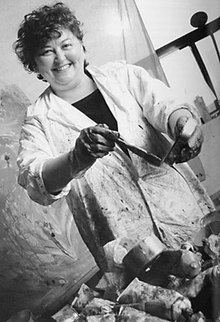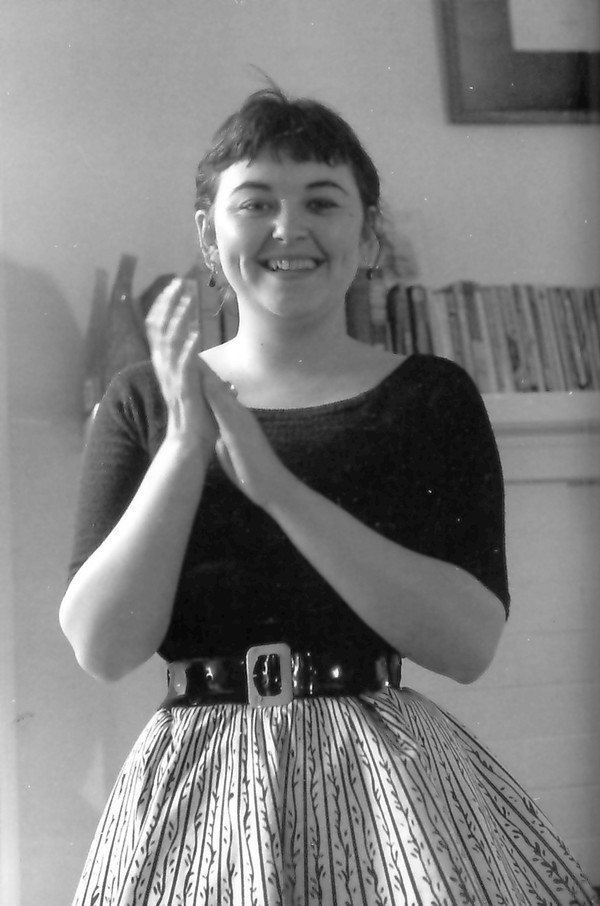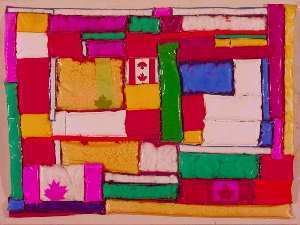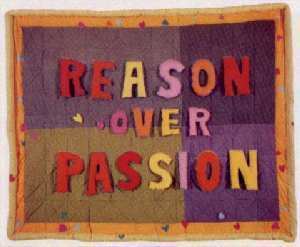Nationality Canadian Period Postmodernism | Role Filmmaker Name Joyce Wieland Known for Film, Painting | |
 | ||
Movement Avant-Garde, Postmodernism Awards Royal Canadian Academy of ArtsOfficer, Order of Canada1982 Movies Artist on Fire, Wavelength, Sailboat, WVLNT, Rat Life and Diet in North America | ||
Joyce wieland rat life and diet in north america
Joyce Wieland, OC (June 30, 1930 – June 27, 1998) was a Canadian experimental filmmaker and mixed media artist.
Contents
- Joyce wieland rat life and diet in north america
- Cat food joyce wieland 1967
- Early life and education
- Career
- Work
- Personal life
- Films about Joyce Wieland
- Visual art
- Influences on other work
- References

Wieland found success as a painter when she began her career in Toronto in the 1950s. In 1962, Wieland moved to New York City and expanded her career as an artist by including new materials and mixed media work. During that time, she also rose to prominence as an experimental filmmaker and soon, renowned institutions such as the Museum of Modern Art in New York were showing her films. In 1971, Wieland's True Patriot Love exhibition was the first solo exhibition by a living Canadian female artist at the National Gallery of Canada . In 1982, Wieland received the honour of the Order of Canada and in 1987, she was awarded the Toronto Arts Foundation's Visual Arts Award. She was also a member of the Royal Canadian Academy of Arts.

Cat food joyce wieland 1967
Early life and education

Wieland was born on June 30, 1930 in Toronto, Ontario, Canada. Her parents were immigrants from Britain. She was the daughter of Sydney Arthur Wieland and Rosetta Amelia Watson. They fell in love when Watson was still engaged to another man. Wieland's father died from heart disease in 1937, and her mother followed soon after him, leaving her and her two siblings to fend for themselves in financially difficult circumstances.

Wieland's aptitude for art was first expressed during her childhood, when she made many drawings and comic books to help her cope with the death of her parents. However, she decided to pursue fashion instead of art.
As a teenager, she attended Central Technical School, where she studied commercial art and graphic design. Wieland first enrolled in dress design and hoped it would help her land a job since she thought art would not be financially rewarding. However, at Central Tech, she met Doris McCarthy who taught at the school. McCarthy's unique artistic identity inspired Wieland to pursue her own. She saw potential in Wieland and convinced her to transfer into the art department.
Career

After graduating in 1948, Wieland held various jobs as a graphic designer. Wieland's first job was with E.S. & A. Robinson in design packaging, followed by work as a designer at Planned Sales. While working for these agencies, Wieland interacted with many artists and fellow alumni from Central Tech and the Ontario College of Art. During this time, she also kept focusing on her art but wasn't confident in showing off her work yet.

In the early 1950s, Wieland's interest in art films grew and she started attending the Toronto Film Society screenings where she was introduced to the works of filmmakers such as Maya Deren, who later influenced her own films. In 1953, Wieland joined Graphic Associates, an animation studio where she learned techniques she would later apply in her own films.

She had her first solo exhibition in 1960 at the Isaacs gallery in Toronto, making her the only woman that the prestigious gallery represented and instantly earning her greater recognition for her work.

She moved to New York in 1962 and throughout the decade produced most of her experimental films. One of these films is Rat Life and Diet in North America (1968), which presents animals as its main characters. The film is a metaphor for revolution and escape, where cats are the oppressors and the gerbils are the oppressed. The gerbils represent political prisoners in the United States who make their way to freedom in Canada. Rat Life and Diet in North America is an example of how Wieland's concern with political issues, nationalism, symbols, and myths was represented aesthetically through her works. Wieland's self-identification as a feminist in an era of second wave of feminism also manifested itself through aesthetic means and played an important part in her career as an artist. However, her visual-art practice's popularity remained confined within Canada.
Due to the political climate in the United States, Wieland returned to Toronto in 1971. She believed that she couldn't make art anymore in America due to its ideological orientation. In 1987 a retrospective of her work at the Art Gallery of Ontario presented a critical overview of both her visual art practice and her experimental films.
Work
Joyce Wieland was a central figure in Canadian art during the 1960s and 1970s. Though, she began her career as a painter, her work came to explore a wide range of materials and media, including film. The 1960s were an incredibly productive time for Wieland, as she responded to the contemporary artistic trends of Pop art and Conceptual art. Joanne Sloane maintains in Joyce Wieland: Life & Work, that her encounters with these influences "were always original and idiosyncratic.” Sloane identifies the several consistent bodies of Wieland's work that emerged throughout the 1960s as: "quasi-abstract paintings that reveal messages, signs, or erotic drawings; collages and sculptural assemblages; filmic paintings; disaster paintings; plastic film-assemblages; quilts and other fabric-based objects; and language-based works." Her art was often infused with humour, even as it engaged with issues of war, gender, ecology, and nationalism.
Internationally, Wieland is best known as an experimental filmmaker whose work challenged and bridged boundaries among avant-garde film factions of her time. Her works introduced physical manipulation of the filmstrip that inscribed an explicitly female craft tradition into her films while also playing with the facticity of photographed images. Wieland's output was small but received considerable attention in comparison to other female avant-garde filmmakers of her time. As both a gallery artist and a filmmaker, Wieland was able to cross over between those realms and to garner attention and support in both worlds.
In the 1980s, Joyce Wieland focused again on painting, though her representations of natural environments became less identifiably Canadian. With their intense colours and near psychedelic effects, Wieland’s later landscapes seem almost outside of time and place.
Personal life
In 1956, Wieland married filmmaker Michael Snow, whom she had met through her job at the animation studio. They remained married for over twenty years until their divorce in 1976. In 1962, Wieland and Snow moved to New York where they lived until 1971.
After she moved back to Toronto in 1971, Wieland maintained a studio practice there until her death on June 27, 1998 from Alzheimer's disease.
Films about Joyce Wieland
Visual art
Influences on other work
In 2014, the focus of artist Mark Clintberg's Fogo Island residency was a quilted response to Wieland's work Reason Over Passion. The original work, made in both English and French, was inspired by the motto of the then-Prime Minister Pierre Elliot Trudeau. The quilt was infamously torn apart by his wife, Margaret Trudeau, in a fit of rage at his cold logic during an argument. In her autobiography Beyond Reason (1979), Trudeau narrates that encounter:
“One day I did what in Pierre’s eyes was the unforgivable. We were having a frosty argument about clothes, and suddenly I flew into the most frenzied temper. I tore off up the stairs to the landing where a Canadian quilt, designed by Joyce Weyland [sic] and lovingly embroidered in a New York loft with Pierre’s motto, ‘La raison avant la passion,’ was hanging. (Its bilingual pair was in the National Gallery.) Shaking with rage at my inability to counter his logical, reasoned arguments, I grabbed at the quilt, wrenched off the letters and hurled them down the stairs at him one by one, in an insane desire to reverse the process, to put passion before reason just this once. Pierre was icy. Vandalizing a work of art; how low could I sink? (Hildegard sewed them all on again, invisibly and without comment, the next morning.). All of it seemed beyond reason to me.”
Clintberg's response, sewn in collaboration with the Wind and Waves Artisans' Guild, turns Wieland's work on its head, formally and literally as each piece of the quilt is stitched "wrong"-side up exposing its soft-coloured underbelly. Moreover in the figurative sense, his re-imagining renewed the need for passion instead of reason that Margaret pleaded in her rage. Unlike Wieland's quilts, which hung on the wall, Clintberg's quilts are placed on a random bed each night at the Fogo Island Inn.
